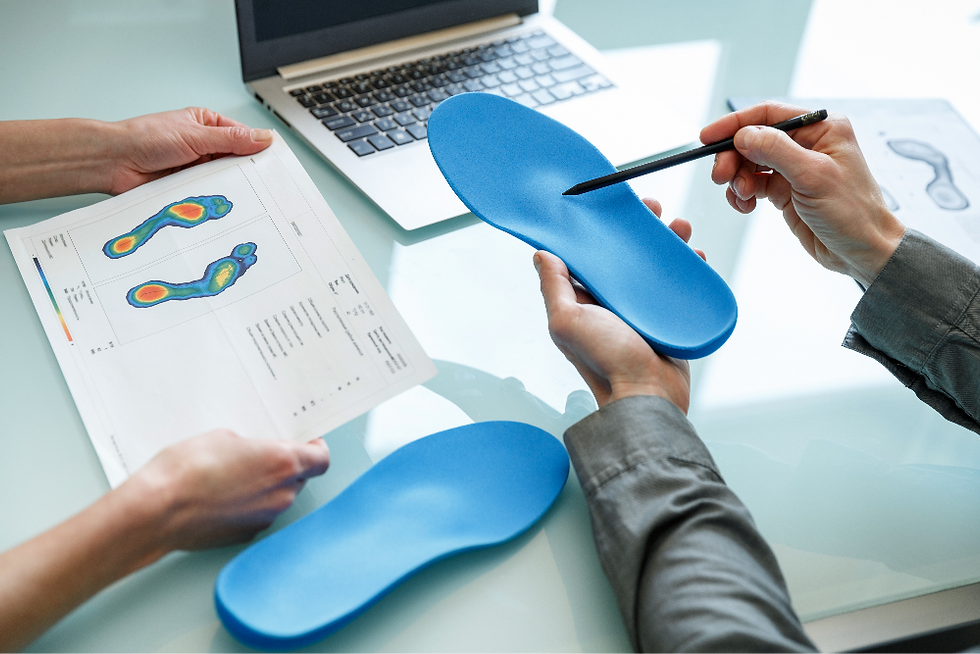In one of Dr. Don Pelto’s Podiatry Management Minutes, he sheds light on a simple yet powerful tool for assessing footwear fit: the shoe liner test. This article expands on Dr. Pelto’s concept, exploring its applications and potential benefits for podiatrists.
Why is Proper Footwear Fit Important?
Ill-fitting shoes are a major reason behind various foot problems. Shoes that are too narrow can cause cramping, pain, and deformities like bunions and hammertoes. On the other hand, overly spacious shoes can lead to instability, friction, and blisters. A proper fit is essential for optimal foot health and biomechanics.

The Shoe Liner Test: A Quick and Effective Assessment Tool for Podiatrists
The shoe liner test is a visual tool that helps podiatrists to assess patients footwear to determine whether their shoes are too narrow or wide. It's a fast and informative way to gauge footwear width, particularly in the toe box.
Here's a detailed breakdown of the process:
Preparation: During a consultation, select a shoe you suspect might be too narrow for the patient.
Liner Removal: Ask the patient to remove the shoe's removable insole, placing it flat on a clean surface.
Foot Placement: Instruct the patient to stand on the liner, aligning their foot for a centered placement.
Fit Evaluation: Visually assess if any part of the toes overhang the liner's edges. Protruding toes, especially the big toe or pinky toe, indicate a potential width issue.
Advantages of the Shoe Liner Test:
Simplicity: This in-office test requires minimal setup and can be seamlessly integrated into consultations.
Objectivity: The visual representation of fit reduces dependence on subjective patient reports of comfort or tightness. This can be particularly helpful for patients who might not readily recognize discomfort or potential problems.

Patient Education: The test serves as a valuable teaching tool. It can be used to effectively communicate potential sizing issues to patients and empower them to make informed footwear choices.
Early Intervention: Identifying narrow footwear early on allows for prompt corrective measures, such as recommending wider shoes paired with custom orthotics to accommodate the patient's foot shape.
Addressing Shoes Without Removable Liners:
For shoes lacking removable liners, Dr. Pelto offers an alternative method. The paper tracing technique provides a similar assessment to the shoe liner test:
Footwear Outline: Place a sheet of paper on the floor and trace the outline of the shoe with a pen.
Patient Footprint: Ask the patient to stand on the paper tracing, ensuring proper foot placement.
Evaluation: Analyze if the patient's footprint extends beyond the traced shoe outline, particularly at the toes. Any protrusions suggest a narrow fit.

Transition into Treatment Options
When patients are able to visually see the results of the shoe liner test, it’s a good time to educate patients about the dangers of wearing shoes that are too narrow or too wide. If their footwear isn't ideal, explain the problems that may be caused in the future and begin laying out their treatment options.
If the shoe liner test reveals that the patient’s shoes are squeezing their feet, it might be time to purchase new footwear accompanied with custom orthotics. Prescribing custom orthotics that fit the unique shape of their feet can provide proper support and cushioning and prevent future problems.

Conclusion
The shoe liner test, along with the paper tracing method for non-removable liners, helps equip you with a simple yet effective way to assess patient footwear fit during consultations. By using these techniques with patients, podiatrists can ensure their patients are fitted in appropriate footwear, promoting optimal foot health and preventing potential complications from improperly sized shoes.
Subscribe to the Podiatry Practice Mastery channel for more great insights, or sign up for Dr. Pelto’s Practice Mastery Academy, where he offers tips on helping podiatrists build a million-dollar practice by working smarter, not harder!


Comments